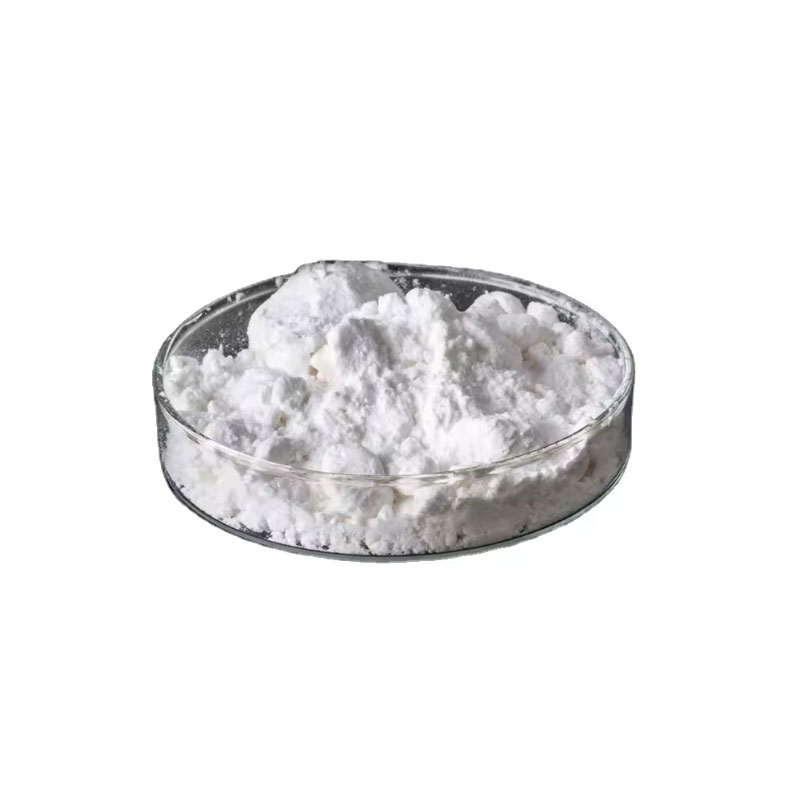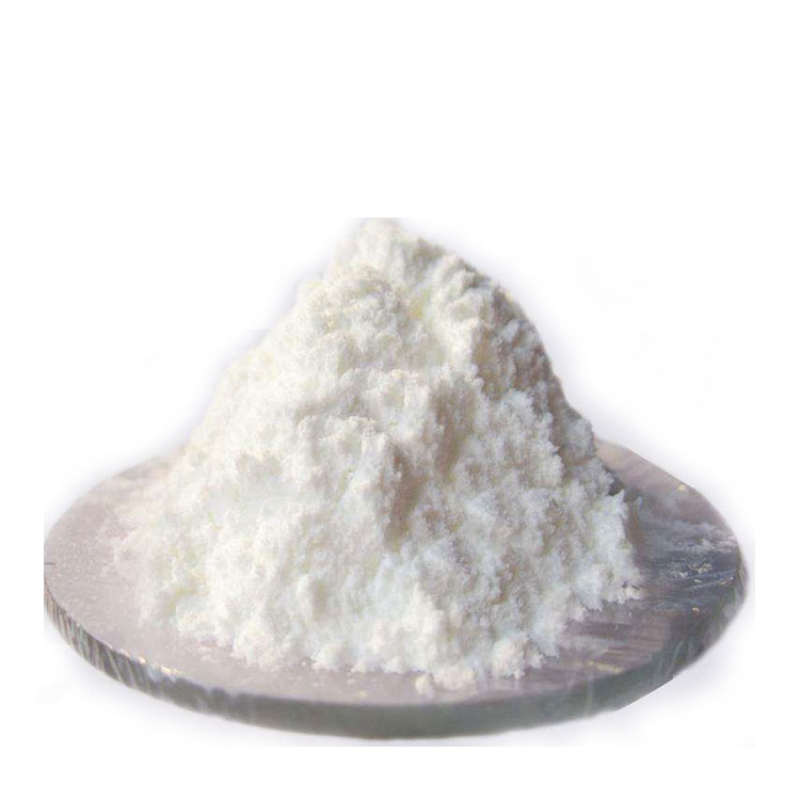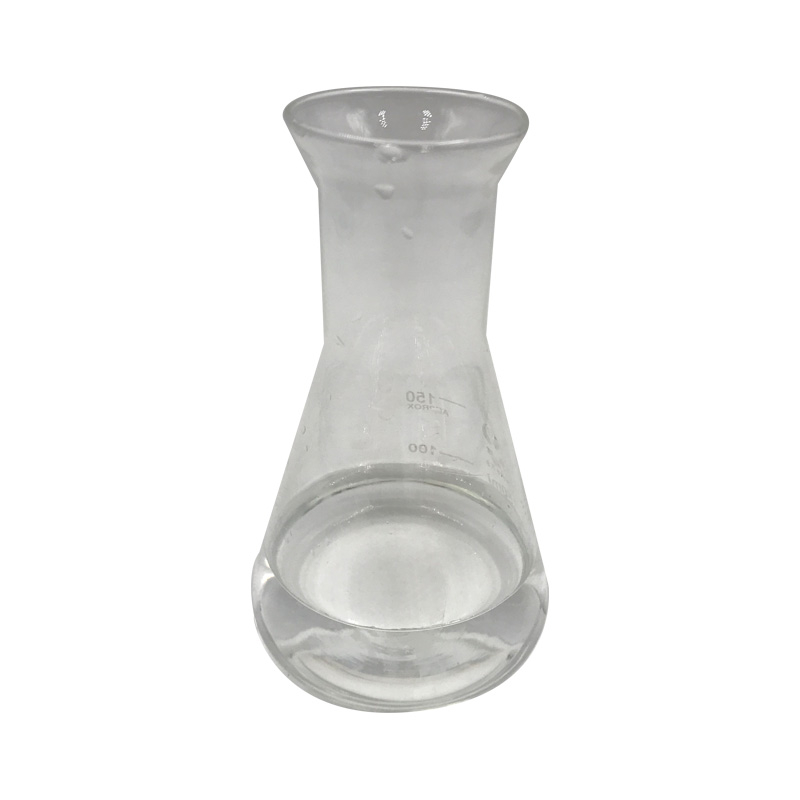Products Description of Antioxidant 1330 CAS#1709-70-2Hindered phenol antioxidant 330 is a white crystalline powder with a melting point above 244°C. It is insoluble in water. Its solubility in some solutions at 18°C (g/100g solvent) is: benzene 20, dichloromethane 31.9, methylcyclohexane 1.7, methanol 0.2, isopropanol 0.1.
Contact Now
Products Description of Octadecanamide CAS#124-26-5Stearamide emulsion is a white emulsion. The product is non-toxic, non-polluting, non-hazardous and green and environmentally friendly.
Contact Now
Products Description of Terephthalaldehyde CAS#623-27-8Terephthalaldehyde is an important fine chemical raw material downstream of paraxylene. Because it has two active aldehyde groups in its molecular structure, it can self-polymerize or copolymerize with other monomers to form polymer materials, which are mainly used to synthesize fluorescent materials. Materials, catalyst carriers and other high molecular polymer products.
Contact Now
Products Description of Antimony triacetate CAS#6923-52-0Antimony(III) acetate is an antimony compound with the chemical formula Sb(CH3CO2)3.
Contact Now
Fumed Silica CAS#112945-52-5Synthetic Amorphous Silica has interesting thickening and thixotropic properties, and an enormous external surface area. It is produced by a vapor phase hydrolysis process using chlorosilanes or substituted silanes such as, silicon tetrachloride in a flame of hydrogen and oxygen. This material is formed and collected in a dry state.
Contact Now
Products Description of Chloramine B CAS#127-52-6Chloramine B hydrate is a white crystalline powder.Chloramine B Chemical PropertiesMelting point 190°CBoiling point 189℃[at 101 325 Pa]density 1.484[at 20℃]vapor pressure 0Pa at 20℃storage temp. Keep in dark place,Inert atmosphere,2-8°Csolubility H2O: 0.1 g/mL, clearform solidpka1.88[at 20 ℃]Water Solubility 0.1 g/mLMerck 14,2074BRN 3599287InChIKeyKDNCILYKSYKEFJ-UHFFFAOYSA-NLogP0.14 at 26℃EPA Substance Registry SystemChloramine B (127-52-6) Safety InformationHazard Codes CRisk
Contact Now
Products Description of Chloramine B 99% CAS#127-52-6Chloramine B, also known as sodium benzenesulfonyl chloride, is a white crystalline powder. It is explosive when exposed to impact, friction, fire or other ignition sources.
Contact Now
Products Description of Cyanamide CAS#420-04-2Pure cyanamide is a transparent liquid, m.p.-115℃, b.p.-8.5℃, soluble in alcohols, phenols, amines, ethers, easily soluble in benzene and halogenated hydrocarbons, and 77.5% soluble in water at 15℃. High concentration cyanamide is very unstable and easy to polymerize, so stabilizers are often added.
Contact Now
Products Description of Morpholine CAS#110-91-8Colorless, water-absorbing oily liquid with an ammonia odor.
Contact Now
Products Description of OBSH CAS#80-51-34,4'-Oxobenzenesulfonylhydrazide, also known as bis(benzenesulfonylhydrazide) ether, is an organic compound with the chemical formula C12H14N4O5S2.
Contact Now
Hexane CAS# 110-54-3Hexane is a incredibly flammable, colorless, volatileliquid with a gasoline-like odor. The water/odor threshold is0.0064 mg/L and the air/odor threshold is 230- 875 mg/m'Molecular weight= 86.20; Specific gravity (H2O:1)= 0.66; .Boiling factor = 68.9℃; FreezingMelting point= -139.49C; .Relative vapordensity (air= 1)= 3.0; V aporpressure = 124 mmHg at 20℃; Flash point=一21.6℃ (cc);Autoignition temperature = 225℃.Explosivelimits: .LEL= 1.1%, UEL= 7.5%.
Contact Now
Products Description of 2,3,4,5-Tetrafluorobenzoic Acid CAS#1201-31-62,3,4,5-Tetrafluorobenzoic acid is a chemical substance with the molecular formula C7H2F4O2.Colorless flaky crystals.
Contact Now
Products Description of Citric Acid Monohydrate CAS#5949-29-1 Citric acid monohydrate is an organic compound with the chemical formula C6H10O8 and a molecular weight of 210.139.
Contact Now
Products Description of Tetradecyldimethylbenzylammonium chloride CAS#139-08-2Benzyldimethyltetramethylammonium chloride is a quaternary ammonium salt used for eye care or treatment of eye diseases. It is an ion association reagent for extraction photometric analysis and a sensitizer for metal photometric determination. It can be dissolved in water and ethanol in any proportion, and can be used with cationic, nonionic surfactants or dyes at the same time. It should not be used with anionic surfactants or additives.
Contact Now
3,6-Dichloro-4-methylpyridazine CAS#19064-64-33,6-Dichloro-4-methylpyridazine Chemical PropertiesMelting point 86-88 °C (lit.)Boiling point 149-151 °C/21 mmHg (lit.)density 1.5462 (rough estimate)refractive index 1.6300 (estimate)Fp 149-151°C/21mmstorage temp. Keep in dark place,Sealed in dry,Room Temperaturesolubility Methanol[soluble in]solubility soluble in Methanolform Crystalline Powderpka-0.56±0.10(Predicted)color BrownBRN 119573InChIKeyROYHWGZNGMXQEU-UHFFFAOYSA-NCAS DataBase Reference19064-64-3(CAS DataBase Reference)NIST Chem
Contact Now
Products Description of PseudotropinePseudotropine (3β-tropanol, ψ-tropine, 3-pseudotropanol, or PTO) is a derivative of tropane and an isomer of tropine.
Contact Now
Products Description of 3-Aminopropyltrimethoxysilane CAS#13822-56-5Silane coupling agent KH-540 is trimethoxysilane, which has a significantly faster hydrolysis rate than triethoxysilane KH-550, and can provide faster reaction and curing speeds.
Contact Now
Products Description of 3-Acetyl-2,5-Dichlorothiophene CAS#36157-40-13-Acetyl-2,5-dichlorothiophene is an organic intermediate and pharmaceutical intermediate. 3-Acetyl-2,5-Dichlorothiophene Chemical PropertiesMelting point 37-40 °C (lit.)Boiling point 120-122°C 4mmdensity 1.4514 (estimate)Fp >230 °Fstorage temp. Keep in dark place,Inert atmosphere,2-8°Cform solidcolor White to Yellow to OrangeBRN 121288CAS DataBase Reference36157-40-1(CAS DataBase Reference)NIST Chemistry Reference2,5-Dichloro-3-thienyl methyl ketone(36157-40-1)Sa
Contact Now
Products Description of Benzalkonium chloride CAS#8001-54-5Benzalkonium chloride (BAC for short) is a quaternary ammonium salt compound. As a broad-spectrum fungicide of cationic surfactants, it can effectively control the growth of algae and slime in water, and has good slime stripping effect and certain dispersion and penetration effects. It also has certain degreasing, deodorizing and corrosion inhibition effects.
Contact Now
Products Description of 2-Amino-3,5-dichloropyridineCAS#4214-74-8White powder2-Amino-3,5-dichloropyridine Chemical PropertiesMelting point 81-83 °C(lit.)Boiling point 268.76°C (rough estimate)density 1.5462 (rough estimate)refractive index 1.6300 (estimate)storage temp. Keep in dark place,Inert atmosphere,Room temperatureform Powder or Crystalspka2.43±0.10(Predicted)color Off-white to pink to beigeWater Solubility insolubleBRN 119376InChIKeyOCWBGKZFOYMCCN-UHFFFAOYSA-NCAS DataBase Reference4214-74-8(CAS DataBase Reference)Safety Information
Contact Now
Products Description of 2-Amino-3,5-dibromopyrazine CAS#24241-18-72-Amino-3,5-dibromopyrazine is used to prepare conjugated polymers for neurotoxin detection.
Contact Now
Products Description of 3,5-Dinitrosalicylic acid CAS#609-99-4Yellow flaky crystals. Melting point 173-174°C. Soluble in alcohol, benzene, ether, slightly soluble in water.3,5-Dinitrosalicylic acid Chemical PropertiesMelting point 168-172 °C (lit.)Boiling point 369.91°C (rough estimate)density 1.7914 (rough estimate)refractive index 1.5300 (estimate)storage temp. room tempsolubility H2O: soluble50mg/mLform Powderpka1.57±0.10(Predicted)color YellowPH Range1.3-1.8 (10g/L @ 20°C)Water Solubility solubleBRN 2220661Stability:Stable.
Contact Now
Products Description of Polyisobutylene CAS#9003-27-4Ammonium Chloride (CAS#12125-02-9) is a white crystalline salt that is highly soluble in water, with a solubility of 37.2 g/100 g at 20°C. It is a crucial component in agricultural fertilizers, providing essential nitrogen for plant growth. This compound is also used as a feed additive and in various industrial applications due to its versatility. In agriculture, Ammonium Chloride is valued for its ability to enhance soil fertility and promote robust plant development.
Contact Now
Products Description of Methyl Tributyl Ammonium Chloride CAS#56375-79-2Methyltributylammonium chloride, also known as tributylmethylammonium chloride, has a molecular formula of C13H30ClN, a molecular weight of 235.84, and a CAS registration number of 56375-79-2.
Contact Now































